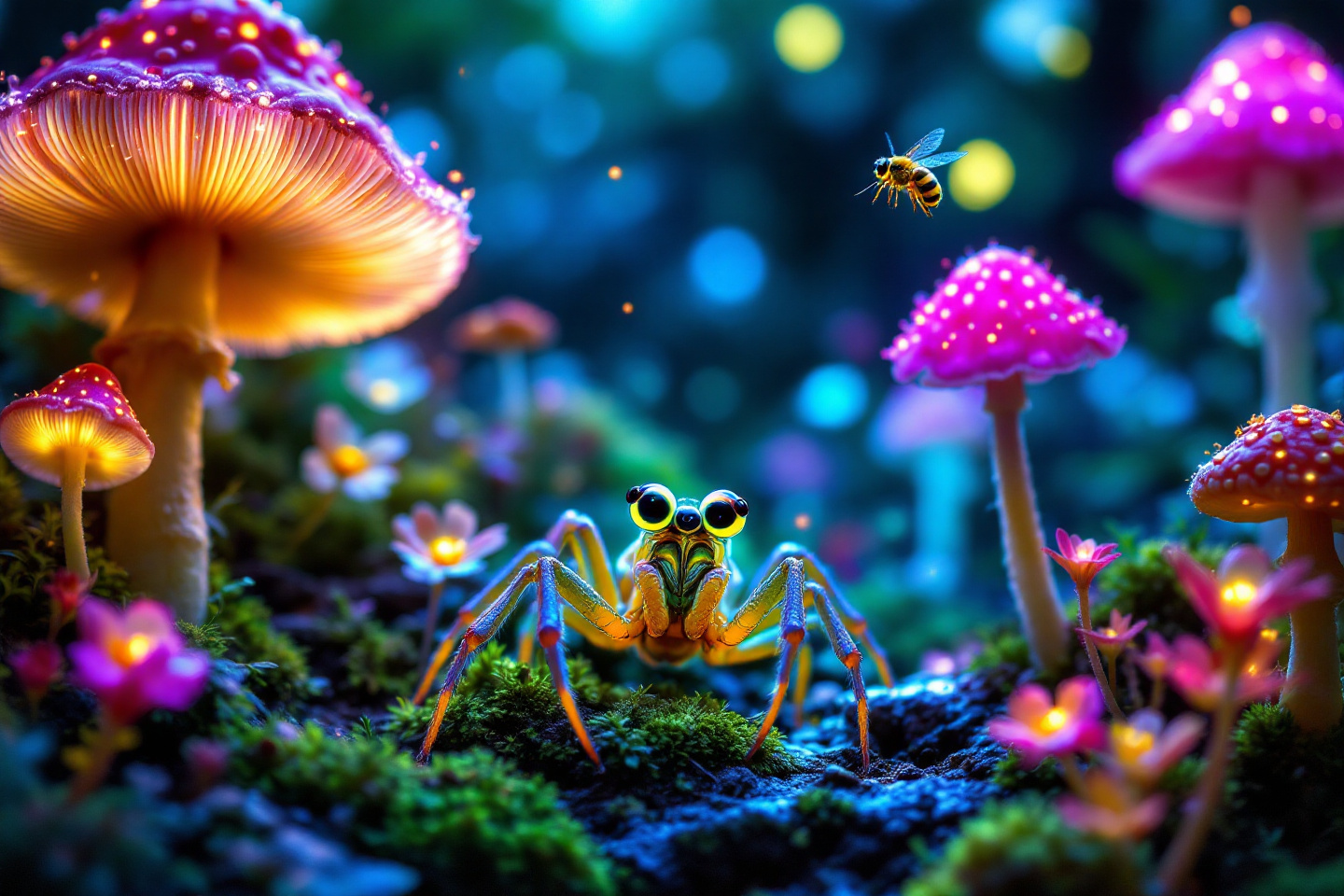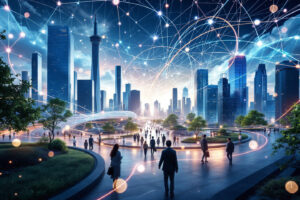Imagine walking through a forest where the trees shimmer with invisible colors, insects move in slow motion, and shadows reveal secrets hidden from human eyes. This isn’t science fiction, it’s reality, just not our reality. Animals experience the world in ways we can barely comprehend, perceiving sights, colors, and motions that are entirely alien to us. While we assume our vision is the default, it’s just one of many ways to see the world. From spiders with nearly 360-degree vision to scallops with hundreds of distributed eyes, nature offers an astonishing range of ways to interpret light.
Eyes That Defy Expectations
Our eyes, placed neatly at the front of our faces, give us depth perception but limit our field of view. For many animals, this arrangement would be absurdly restrictive.
Hunters With Eight Eyes
Jumping spiders, unlike their web-weaving relatives, actively hunt their prey, which requires exceptional vision. These tiny creatures have eight eyes, each serving a unique function. Their largest front-facing eyes provide sharp, detailed images, while smaller side and rear eyes detect motion, creating a nearly complete visual field. These hunters don’t just react—they plan, strategizing their approach to catching prey. If intelligence were measured by curiosity, these spiders would rank surprisingly high.
“Seeing is not just observing—it’s understanding.”
Scallops: The Sea’s Unexpected Voyeurs
While most bivalves rely on simple touch and chemical senses, scallops are different. They have up to 200 tiny eyes lining their shells, allowing them to detect movement and even interpret detailed images. However, unlike our two-camera setup, each of their eyes captures light using a tiny mirror instead of a lens. Their vision likely doesn’t create a complete image, but rather an alert system that tells them when to react.
The Ultimate Color Detectives
Mantis shrimp possess some of the most complex eyes in the animal kingdom. They have 16 types of color receptors, compared to our mere three, allowing them to detect ultraviolet, infrared, and polarized light. These tiny but powerful creatures see a world bursting with colors we will never experience, using their vision to communicate and hunt with deadly precision.
The Split Vision
Many birds, especially prey species, have eyes positioned on the sides of their heads, granting them nearly panoramic vision. Raptors, on the other hand, have forward-facing eyes for depth perception but often possess two focal points per eye—one for scanning long distances and another for tracking movement up close. A falcon diving toward its prey doesn’t look straight ahead; instead, it spirals downward, keeping its prey in the sharpest part of its vision.
“Vision is not just clarity, it’s awareness of the unseen.”
Beyond the Limits of Human Eyes
Seeing at Different Speeds
Humans process visual information at around 60 frames per second, but some animals perceive time differently. Flies and other fast-moving insects see at rates up to 350 frames per second. To them, a human trying to swat them moves in slow motion, making escape easy. Meanwhile, animals like turtles and deep-sea creatures have much slower visual processing, experiencing their world in what might feel like time-lapse.
Nocturnal Color Vision
It was long assumed that night meant a world of black and white, but certain nocturnal animals see in full color even in near-total darkness. The elephant hawkmoth can distinguish vibrant hues under conditions where humans see nothing at all. It does this by collecting tiny amounts of available light over time, much like a long-exposure photograph.
“Darkness is only a limit if you lack the right eyes.”
Seeing the Invisible
While humans see a limited spectrum of visible light, many animals detect wavelengths beyond our range. Bees, for example, perceive ultraviolet markings on flowers that act like neon landing strips. Snakes use infrared vision to detect the heat signatures of prey, essentially seeing warm-blooded animals glowing in the darkness. What is invisible to us is a vibrant, information-rich world for them.
Bioluminescent Vision
Deep-sea creatures like the dragonfish can see bioluminescence in total darkness. Some species have evolved the ability to emit red light, a wavelength invisible to most other marine life, allowing them to illuminate prey without being detected.
“In darkness, some create their own light.”
Eyes That Break the Rules
The Brittle Star
Some animals abandon the idea of having one or two eyes altogether. The brittle star, a relative of the starfish, has no centralized eyes but instead distributes light-sensitive cells across its entire body. It essentially “sees” by interpreting the way shadows pass over its arms, giving it a functional kind of vision without having eyes at all.
The Largest Eyes on Earth
Deep-sea animals live in darkness, but the giant squid has evolved soccer-ball-sized eyes to detect faint bioluminescent flashes from approaching predators like sperm whales. These massive eyes serve one purpose: survival. With no need for high-definition images, they function as an advanced early-warning system, giving the squid a head start in an environment where being seen first means being eaten.
Fish With Mirror Eyes
Some fish, like the brownsnout spookfish, have mirrored eyes that reflect and concentrate light, allowing them to see in two directions at once. This adaptation helps them detect predators from both above and below in the deep sea, where light is scarce.
Rethinking Vision and Reality
What we call reality is merely the world as we see it—but that is not the world as it is. Animals reveal to us that sight is not a universal experience; it is a specialized adaptation. Some creatures see in wavelengths we will never perceive, others interpret time at a pace we cannot imagine, and still others have eyes so alien that their experience of vision is beyond our comprehension.
Understanding animal senses doesn’t just expand our knowledge—it reshapes our place in the world. Perhaps, by recognizing the limits of our own perception, we come a little closer to truly seeing.
“To understand the world, we must first accept that we see only a fraction of it.”



